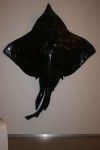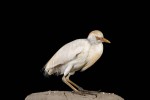Ocellated Turkey – Meleagris ocellata
Ocellated Turkey – Meleagris ocellata
The ocellated turkey belongs to the Phasianidae family. The Ocellated Turkey is more colorful but smaller than wild turkeys – Meleagris gallopavo.
Its distribution is restricted to Central America in the Yucatán Peninsula, including five states of Mexico and in some areas of Belize and Guatemala.
The adult male has iridescent plumage, a brilliant blend of bronze and green. The coverts and tail are bluish gray with sharp bronze blue eyespots as a sub terminal band. The ends of the feathers are gilded rather according to light. The beak is blackish with the end pinkish horn. The eyes are brown. The legs and feet are deep red. The male has impressive spurs up to 4 cm in length. The female has similar plumage but a little dull. Juvenile is even duller than the female and has a barred pink, brown and cinnamon plumage.
The Ocellated Turkey produces giggles during the breeding season to attract females. It is present in tropical deciduous forest in the green forests in the plains, in clearings or uncovered grassland. It feeds on the ground and has an omnivorous diet in adulthood. It eats grass seeds, leaves, buds and flowers, grain, fruit and insects. It scratches the ground with its claws through the leaf litter in search of food. In winter, it feeds rhizomes. It is a diurnal species. At night, it sleeps in trees to escape predators. It is generally more active in the early morning and dusk. It is mainly terrestrial and spends most of its time on the ground.
At the beginning of the breeding season, the male starts screaming and courtship displays include vocal and visual signals. The breeding season begins in March and April. Its nest is a shallow depression scraped in the ground by the female. The male does not participate at all the tasks related to reproduction. It lays 8 to 15 eggs. Incubation lasts 28 days. The young are precocial and feed on insects during the first days of their lives before becoming omnivores at six weeks. They are trying to first flights from the age of 2 or 3 weeks.
Their predators are foxes, skunks, raccoons, but also coyotes, lynx and of course the raptors attacking adults and youth.
The species is classified as almost threatened.






